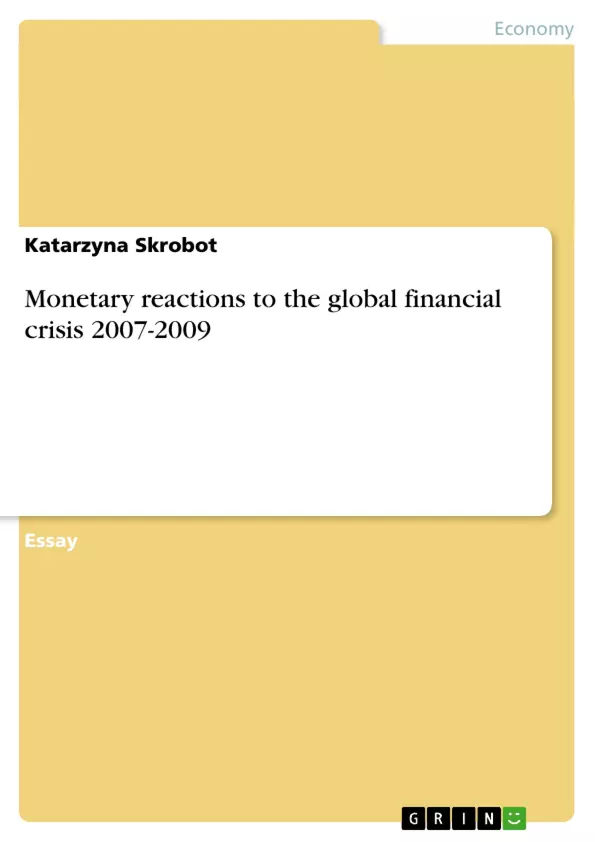For the last couple of years the world has been experiencing one of the most severe
financial crises ever which has been often compared to the Great Depression from 1929. The crisis began with the downturn of the subprime housing market in the USA in 2007 and spread all over the planet. The negative effects of the Global Financial Crisis from 2007-2009 are both financial and real. The financial impact of the crisis resulted in problems in the banking systems of many countries. The real impact was that the economic growth has slowed down. The crisis brought many challenges and questions concerning the ability of the industries in the national economies to survive, the destiny of the employees and the role of the government in the current market situation. However, the crisis might create opportunities for some industries if the companies don’t let themselves to be misled by the general negative moods towards the current state of the market.[...]
Inhaltsverzeichnis (Table of Contents)
- Financial Crisis
- Economies at Financial Crisis
- Reactions to the World Crisis
Zielsetzung und Themenschwerpunkte (Objectives and Key Themes)
This text examines the global financial crisis of 2007-2009, analyzing its origins, impact on various economies, and the policy responses implemented by governments and international institutions.
- The origins and impact of the financial crisis on both developed and developing economies
- The challenges faced by the global financial system and the need for reform
- The role of government intervention and the importance of fiscal and monetary policies
- The impact of the crisis on the International Monetary Fund (IMF) and its role in the recovery
- The unique challenges faced by low-income countries (LICs) and the potential opportunities for resilience
Zusammenfassung der Kapitel (Chapter Summaries)
- Financial Crisis: This chapter introduces the global financial crisis of 2007-2009, tracing its origins to the subprime housing market downturn in the USA and its subsequent spread worldwide. The chapter explores the financial and real impacts of the crisis, highlighting the challenges to national economies and the potential for opportunities for certain industries.
- Economies at Financial Crisis: This chapter delves into the crisis's impact on both wealthy and low-income countries, emphasizing the need for fundamental reforms in international banking and finance. It discusses the challenges to financial stability, including market and institutional regulation, and the importance of revising Basel II's three pillars to include all market instruments and institutions. The chapter also examines the impact of the crisis on the IMF, highlighting its role in immediate crisis management and reforms to global macroeconomic surveillance.
- Reactions to the World Crisis: This chapter analyzes the responses of various countries and institutions to the crisis. It discusses the impact on the USA, the EU, and LICs, highlighting the unique challenges faced by each region. The chapter emphasizes the need for a coordinated response to the crisis and explores potential solutions, including government intervention, policy reforms, and the role of international institutions.
Schlüsselwörter (Keywords)
This text focuses on the global financial crisis of 2007-2009, examining its impact on various economies, the role of government intervention, and the need for reforms in the global financial system. Key themes include financial stability, market regulation, international institutions, and the challenges faced by developing economies.
- Quote paper
- Katarzyna Skrobot (Author), 2009, Monetary reactions to the global financial crisis 2007-2009, Munich, GRIN Verlag, https://www.grin.com/document/140071



